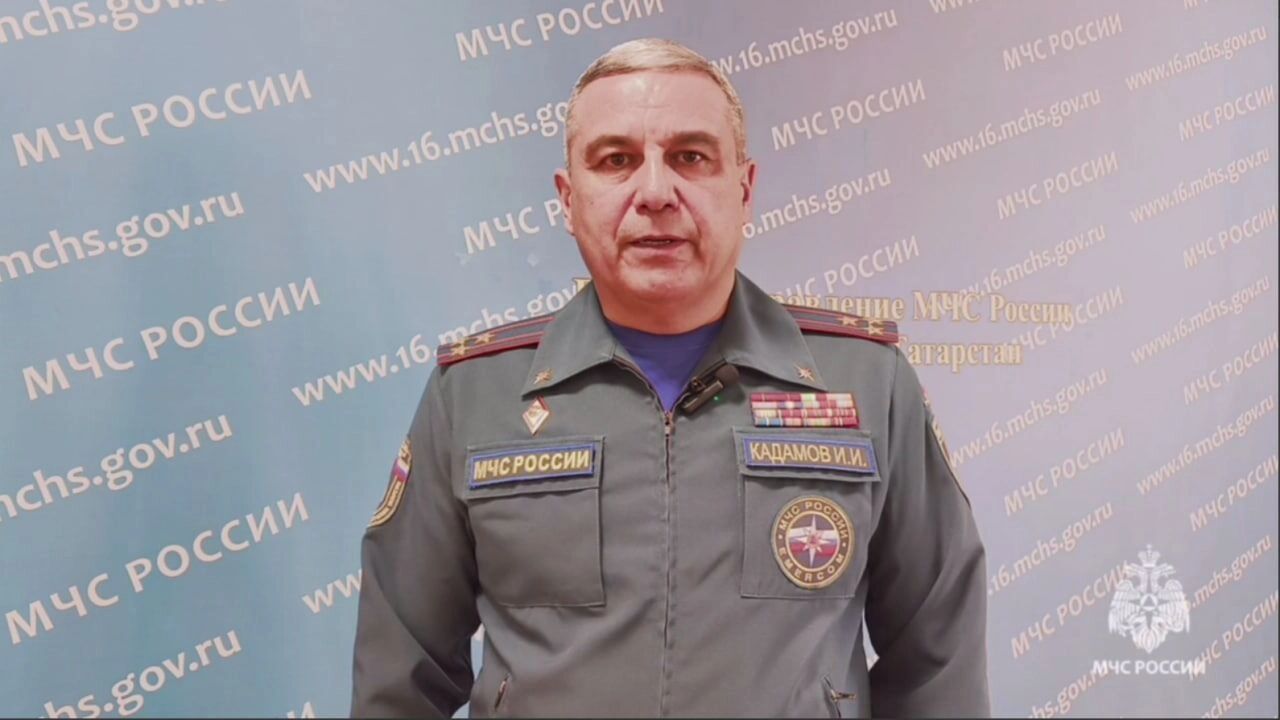On the night of Monday, July 21, several regions of Russia were under a “Drone Threat” alert. For example, in Chuvashia and other areas. However, the restrictions were lifted by around 9:40 AM Moscow time. In Tatarstan, the drone threat alert lasted nearly 5 hours.
At the same time, Rosaviatsiya did not report any restrictions at the airports of Kazan and Nizhnekamsk, as well as other regions of the Volga Federal District. Despite this, several flights to and from Moscow were canceled at Kazan Airport. Preliminary reports suggest this was due to drone attacks on the Moscow region.
On the night of July 21, flight departures and arrivals were restricted at Moscow’s Sheremetyevo, Zhukovsky, and Domodedovo airports. Restrictions were also in place at Vnukovo Airport. These were lifted by around 4 AM. Flight operations at Nizhny Novgorod Airport remained prohibited until nearly 9 AM on Monday.
On the night of July 21, 74 Ukrainian drones were shot down over Russia, according to the country’s defense ministry. Most were destroyed over the Moscow region—23 in total, with 15 heading toward Moscow. Another 14 drones were downed over Kursk Oblast, 12 over Rostov Oblast, 10 each over Bryansk and Kaluga Oblasts, 4 over Tula Oblast, and 1 over Lipetsk Oblast.
Emergency services were deployed to the crash sites of the drones. No casualties were reported in Moscow. No details were provided about the aftermath of the drone attack in Kursk Oblast. The acting governor of Rostov Oblast confirmed no injuries in the region.
In the village of Kamennolomni, a drone attack damaged a dispatcher’s building at the railway station. A drone fragment reportedly hit the structure. As a result, trains were forced to reduce speed significantly, causing delays. Currently, over 50 trains are reported to be delayed.
“Russian Railways has assured that passengers on delayed trains will be provided with water, and if the delay exceeds four hours, meals will also be provided,” the statement noted.
No casualties were reported in Bryansk Oblast following the drone attack. The same was confirmed in Kaluga Oblast. The governor of Tula Oblast also reported no injuries. No details were provided about the impact of the drone attack in Lipetsk Oblast.
In many Russian regions, including Tatarstan, drone threat alerts are often accompanied by mobile internet slowdowns or outages. Due to this, a map of free Wi-Fi hotspots was activated in the republic. Even on July 21, complaints about slow internet speeds persisted in Tatarstan.
Kazan Airport
Kazan International Airport (KZN) is a major airport in Tatarstan, Russia, located about 25 kilometers from the city of Kazan. Opened in 1979, it has since been modernized, including a major renovation ahead of the 2013 Universiade (World University Games). Today, it serves as a key transportation hub in the Volga region, handling both domestic and international flights.
Nizhnekamsk Airport
Nizhnekamsk Airport, located in the Republic of Tatarstan, Russia, is a regional airport serving the city of Nizhnekamsk and the surrounding industrial area. Opened in the late 20th century, it primarily handles domestic flights and plays a key role in supporting the region’s petrochemical industry. While not a major international hub, it facilitates business and passenger travel to this economically significant part of Russia.
Sheremetyevo Airport
Sheremetyevo International Airport, located in Moscow, Russia, is one of the country’s largest and busiest airports. Opened in 1959 as a military airfield, it was later transformed into a civilian airport and became a key international gateway, notably hosting the 1980 Summer Olympics. Today, it serves as a major hub for Aeroflot and handles millions of passengers annually, with modern terminals and extensive flight connections.
Zhukovsky Airport
Zhukovsky Airport, located in Moscow Oblast, Russia, is one of the country’s major aviation hubs, primarily serving cargo and charter flights. Opened in 2012, it was developed to relieve congestion at other Moscow airports and is named after Russian aviation pioneer Nikolai Zhukovsky. The airport is also adjacent to the Gromov Flight Research Institute, a key center for aerospace testing since the Soviet era.
Domodedovo Airport
Domodedovo Airport (DME), located about 42 kilometers southeast of Moscow, is one of Russia’s largest and busiest international airports. Opened in 1964, it became a major hub for both passenger and cargo flights, playing a key role in Soviet and later Russian aviation. Today, it serves as a primary gateway to Moscow, offering connections to domestic and global destinations.
Vnukovo Airport
Vnukovo Airport, located in Moscow, Russia, is one of the country’s oldest and busiest airports, opened in 1941 during World War II to serve military and civilian flights. It became a key international gateway for the Soviet Union and later Russia, known for handling government and VIP flights. Today, it remains a major hub, offering both domestic and international routes while maintaining its historical significance.
Nizhny Novgorod Airport
Nizhny Novgorod International Airport (GOJ), located about 14 km southwest of Nizhny Novgorod, Russia, was established in 1938 as a military airfield before transitioning to civilian use in the 1950s. Today, it serves as a key regional hub, handling domestic and limited international flights. The airport was renamed in 2018 after the famous Russian inventor and aviation pioneer Ivan Kulibin.
Kamennolomni railway station
Kamennolomni Railway Station is a small station located in Rostov Oblast, Russia, serving the town of Kamensk-Shakhtinsky. It was opened in 1871 as part of the Voronezh-Rostov railway line, playing a key role in transporting coal and goods from the Donbas region. Today, it remains a functional stop for regional passenger trains, reflecting its historical importance in Russia’s industrial development.





